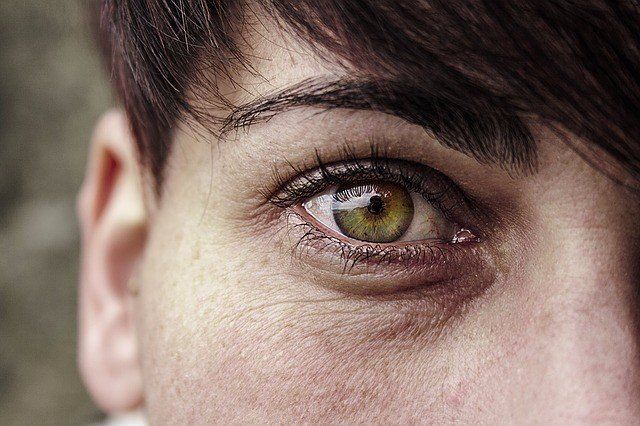Do You Know These 10 Amazing Facts About Eyes?
It’s no mystery that your sight is one of your most precious features. However, your eyes themselves and the science behind your vision are full of some pretty interesting and even mysterious facts. For example, did you know that your corneas (the clear, protective, outer layer on each eye) are the only tissues that not only don’t have blood vessels, but don’t require blood at all? If you think that’s neat, keep reading for even more amazing facts about eyes.
1. Upside Down & Backwards
Your retinas (the surface at the back of your eyes that is responsible for sending and converting light signals to your brain) actually perceive images upside down and backwards! Your brain thankfully receives these images and inverts them to their proper orientation. Basically, this distortion allows our eyes to view things much larger than our pupils and also gives us our peripheral vision. Without this wacky process, we would only have a very limited view of the world around us (imagine looking through a straw).
2. Blue Eyed Mutation
Ever wonder why brown eyes are so common? All humans originally had brown eyes. According to
Live Science , blue eyes appeared as a mutation between 6,000 and 10,000 years ago, but before this they simply didn’t exist. The mutation affected the OAC2 gene which is responsible for the production of color in our hair, skin, and nails.
3. Crocodile Tears
Tears actually have different biological compositions depending on if they’re tears of emotion or just eye irritation. There are three groups of tears including psychic tears that occur when you’re feeling an intense negative or positive emotion, basal tears which are released continuously to keep the eye lubricated, and reflex tears that are a response to an irritant such as dust or other allergens.
Bonus:
A photographer named Rose-Lynn Fisher found this fact so interesting that she documented the
microscopic images of different kinds of tears showing the vast difference in each.
4. Cry Baby
Speaking of crying, while newborn babies no doubt have some of the most powerful cries imaginable, they aren’t actually producing tears. A newborn’s tear ducts are not fully formed until 3-12 weeks of age. Up to this point, their eyes make just enough tears to keep their corneas healthy and lubricated. What’s even more interesting, is that despite their inability to produce emotional tears, their eyes do exhibit reflex tearing (a reaction to any irritants such as dust or onion vapors).
5. In The Blink Of An Eye
Most everyone has heard the saying “in the blink of an eye”, referring to something being extremely fast. This phrase couldn’t be more accurate. The muscles responsible for controlling your blink are actually the fastest in your body. In fact, a blink only lasts 100-150 milliseconds making it possible to blink up to five times in one single second!
6. Sobr-eye-ity Test
A study performed by the University of Vermont has shown a link between eye color and alcoholism. Those with lighter colored eyes showed a higher incidence of alcoholism when compared to brown eyes, with blue eyes showing the highest association. While scientists emphasize that more research is needed to explain the correlation, they have found that the genetic sequences that control eye color and those linked to alcoholism are in close proximity to one another and even line up along the same chromosome.
7. Lucky Color Green
Consider yourself lucky if you’ve been blessed with green eyes. Green eyes are by far the least common eye color. In fact, only around two percent of the population have them. The green color occurs as a result of having lower levels of black melanin and higher levels of yellow melanin (melanin is the pigment that makes skin tan and hair and eyes dark). Conversely, eyes without melanin appear blue, and eyes with a higher amount of black melanin appear brown.
8. Size Matters
Ever notice how big and cute baby’s eyes seem? This is probably because babies are born with their eyes more or less fully grown! While eyeballs do continue to grow after birth, it is such a small amount that it is barely noticeable. The eyes actually grow the least of any other body part and stop growing around puberty, unlike your nose and ears which will grow your entire life.
9. Urban Myth
Ever heard the scary stories about a contact lens moving around and becoming trapped behind someone’s eye? Well, you can rest easy because that one is fortunately just an urban myth. Thanks to the conjunctiva - the thin moist lining of the eyelid - nothing can just slip undetected to the back of your eye. This is because the conjunctiva not only lines the eyelids, but also folds back and becomes the outer covering of your sclera (the white part of your eye) forming a continuous layer and barrier against rogue contact lenses.
10. Show Me Your Eye-D
Most of us have seen the movies and television programs where a top-secret agency has its employees look into an iris or retinal scanner as an ultra secure method of identification. But do you know why this is considered a preferred method over thumbprint verification? While thumbprints have around 40 unique characteristics, irises have over 200! Each ridge, fold, and color variation of the iris is completely unique to its owner and the error rate of these scans is only about one in a million.
If you find these 10 amazing eye facts as interesting as we do, be sure to share this on Facebook! Do you know any other amazing eye facts? Feel free to share them with us in the comments below.






